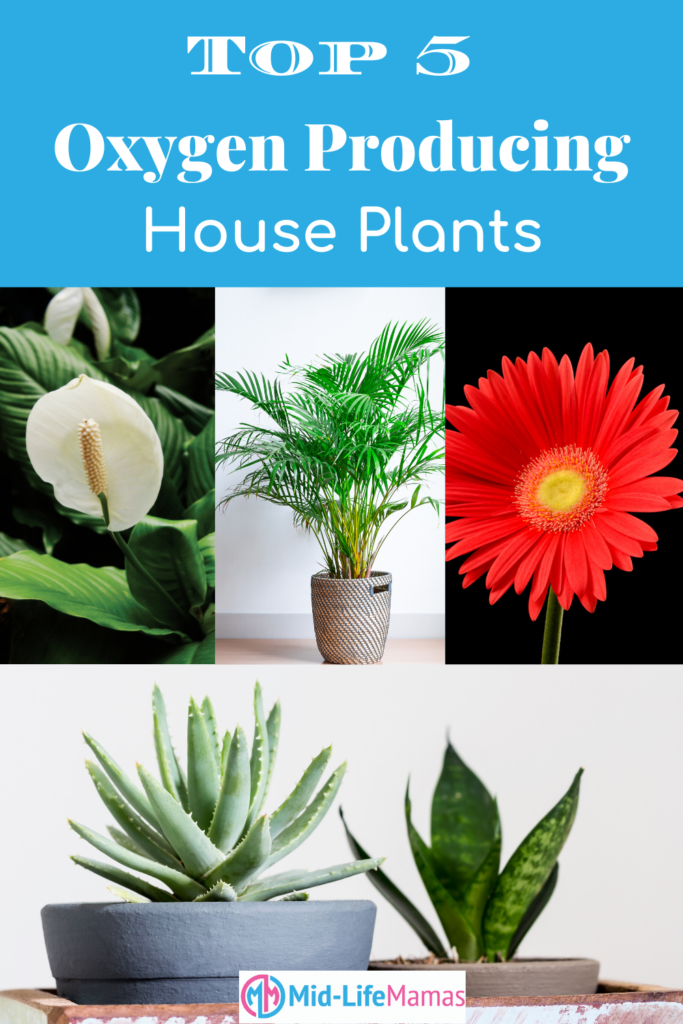
Bringing in one of these top 5 high oxygen producing house plants into our homes is an easy way to increase the oxygen levels in our bodies. We all know we can’t live without oxygen. But we may not realize how important it is to get high quality oxygen to all parts of our bodies so we function at optimal levels and live longer.
More oxygen means more energy!
PROVEN STRATEGIES FOR GAINING MORE ENERGY THROUGH THE DAY
Depending on where you live you may not have the cleanest outside air to breath. Unfortunately, there’s not much you can do to change it, unless of course your want to become an activist of some sort (you go girl/guy! ).
You do however have control over what’s in your house. Make sure you have good quality filters, buy your furniture from eco-friendly companies, use green household products and fill your house with high oxygen producing plants that also remove common household toxins.
Here are 5 oxygen producing house plants that also remove toxins from the air (NASA Clean Air Study).
PROVEN STRATEGIES FOR GAINING MORE ENERGY THROUGH THE DAY
Snake Plant (Sansevieria Trifasciata)
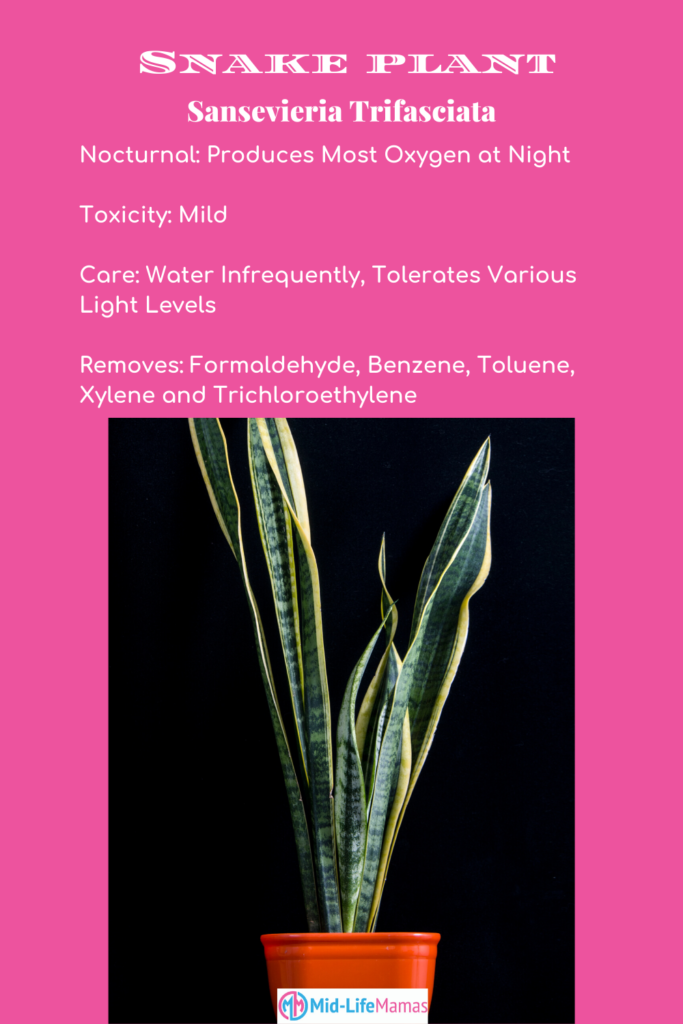
Also known as Mother-In Law’s Tongue which apparently is due to the shape and sharpness of the leaves. Some of you might be able to relate to this description.
I don’t advise eating it, but it’s also related to the asparagus family.
It’s said to be very efficient in converting Carbon Dioxide (CO2) to oxygen during the night. It’s a nocturnal plant so it’s working while your sleeping.
Air Purifying
Snake plants are one of the best plants for filtering the air. They remove formaldehyde, benzene, toluene, xylene and trichloroethylene that may be present in household cleaning products, carpets and furniture.
Mildly Toxic
The snake plant is mildly toxic to cats and dogs due to a chemicals called saponins that serves as the plants natural defenses from insects, microbes and fungi.
Care
These are very easy to care for so if you forget to water it you won’t kill it (perfect for me). In fact if you water it too much it will rot. Various light levels are tolerated by snake plants.
PROVEN STRATEGIES FOR GAINING MORE ENERGY THROUGH THE DAY
Areca Palm(Chrysalidocarpus Lutescens)
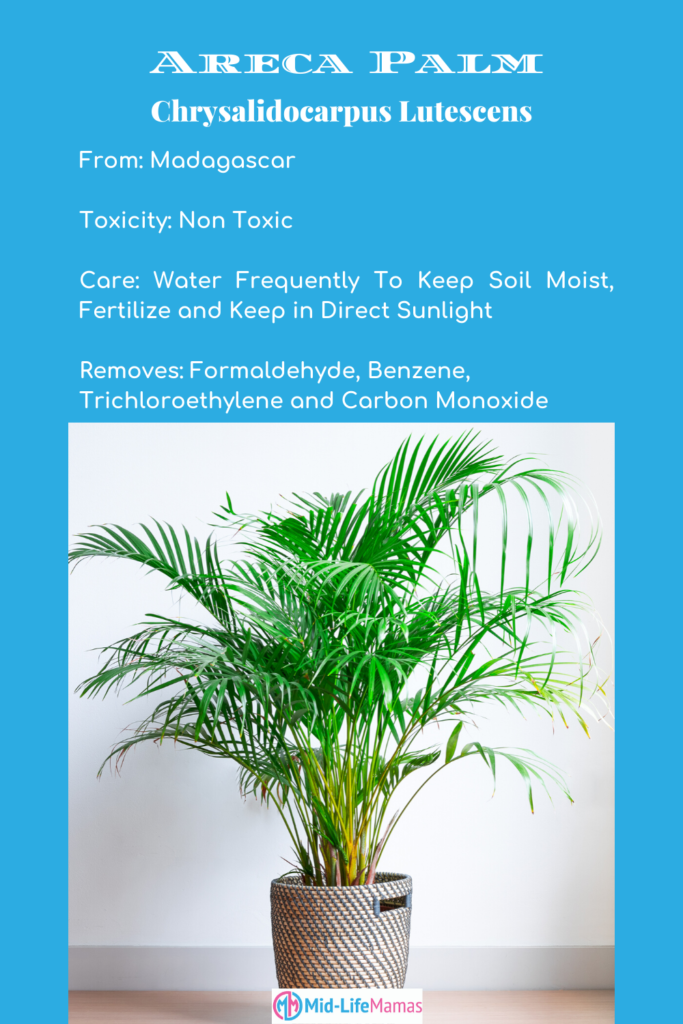
These are beautiful tropical looking plants from Madagascar. They can grow up to 7 feet and live for 10 years.
They grow 6-10 inches a year so it’s better to start off with a small plant.
Air Purifying
The NASA Clean Air Study was a two year study with the Associated Landscape Contractors of America showed that the Areca Palm removes more toluene and xylene than any other plant.
Areca also removes benzene, carbon monoxide, formaldehyde and trychloroethylene which are common indoor air contaminants.
Non Toxic
Non-toxic to both cats and dogs.
Care
The soil needs to be fertilized, kept moist and kept in direct sunlight.
PROVEN STRATEGIES FOR GAINING MORE ENERGY THROUGH THE DAY
Gerber Daisy (Gerbera Jamesonii)
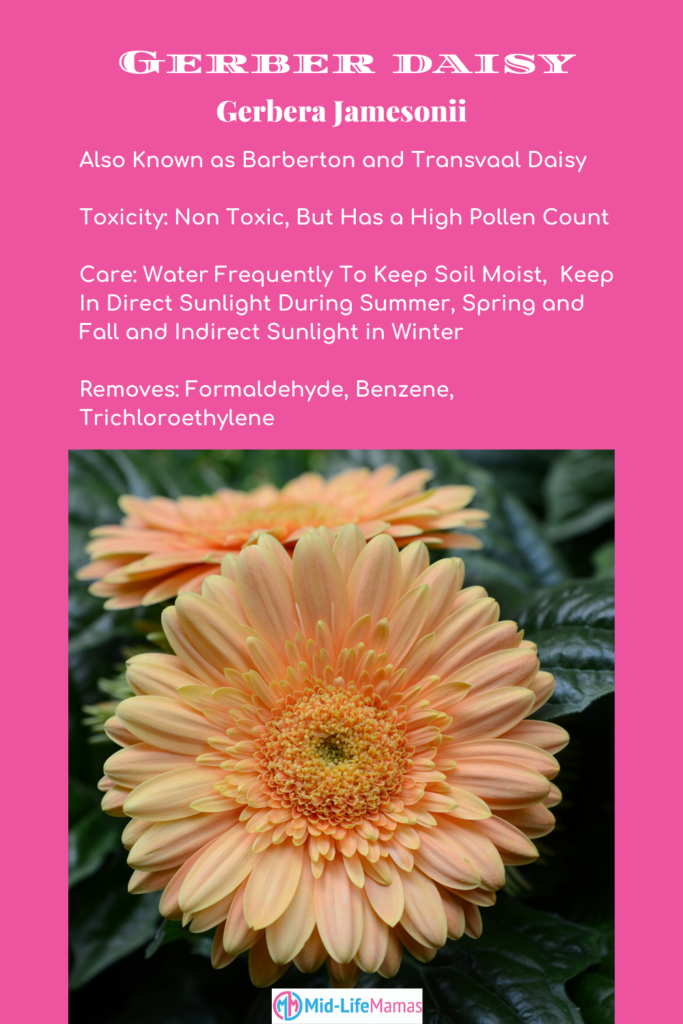
Also known as the Barberton Daisy. The Gerber Daisy is a beautiful household plant with brilliant colors of red, yellow, orange and pink. It brightens up your home and office.
These are also nocturnal plants that does most of their work at night when they produce high levels of oxygen.
Air Purifying
Can remove benzene, formaldehyde, and trichlorothylene (TCE) present in your home according to the NASA study.
Benzene can be present in our homes from outdoor sources, building materials and furniture. TCE may be found in some cleaning products.
If anyone suffers from allergies this may not be the plant for you because they have a very high pollen count.
Non Toxic
A good choice for homes with pets. It’s listed as non-toxic by the the American Society for the Prevention of Cruelty to Animals (ASPCA).
Care
They thrive in bright sunlight during the summer, spring and fall with indirect light during the winter. Water the plant regularly so the soil stays moist.
PROVEN STRATEGIES FOR GAINING MORE ENERGY THROUGH THE DAY
Aloe (Aloe Vera)
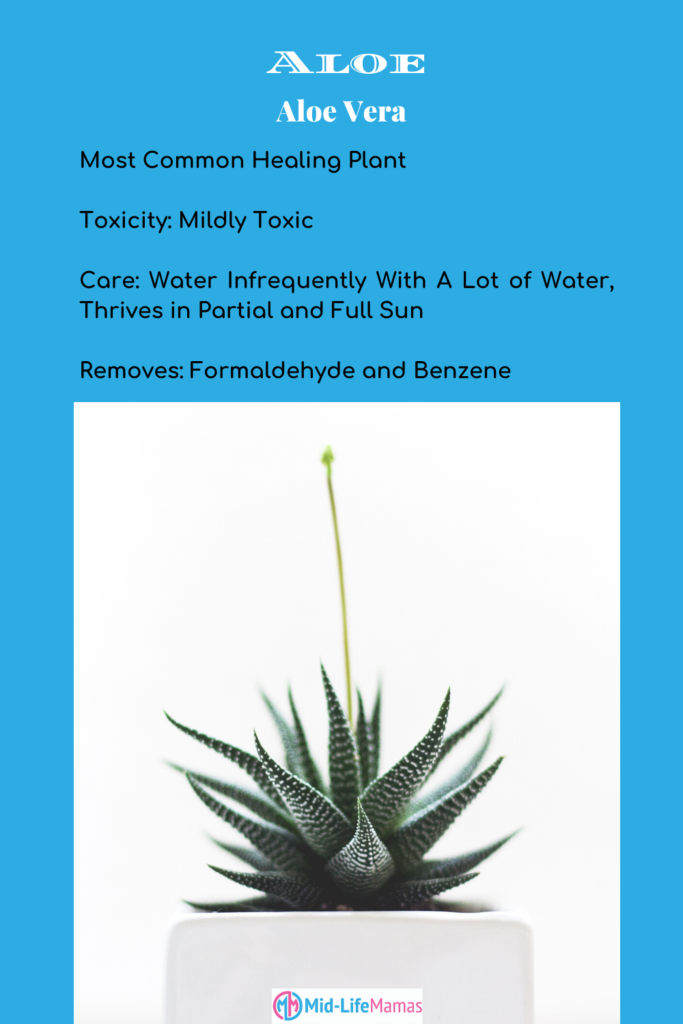
It’s one of the most commonly known healing plants. It’s the first thing I grab after burning myself.
The plant’s leaves contain a clear “meat” that is filled with vitamins, enzymes, amino acids, and has antibacterial properties.
Aloe Vera is another nocturnal plant that does most of it’s work at night releasing oxygen, so they help us sleep better.
Air Purifying
Great for removing benzene and formaldehyde which is found in varnishes, floor finishes, detergents and carpets
Mildly Toxic
Although aloe vera is a medicinal plant for humans it is moderately toxic to cats and dogs.
If ingested by animals it can cause vomiting, diarrhea, lethargy, depression, anorexia and tremors according to the ASPCA.
Care
Aloe vera is very easy to care for, which I can attest to because it’s the only plant that has never died on me.
It thrives in partial and full sun. They like a lot of water but they like it infrequently. Indoor house plants usually bloom during the summer with yellow flowers.
PROVEN STRATEGIES FOR GAINING MORE ENERGY THROUGH THE DAY
Peace Lily (Spathiphyllum)

Another aesthetically pleasing plant that can increase the oxygen levels in your home.
Air Purifying
NASA research has shown that Peace Lilly’s are effective at removing benzene, formaldehyde, trichloroethylene, xylene and toluene.
But if you have anyone in your home with allergies, beware of the pollen and floral scents produced by Peace Lilies.
Toxicity
If you have small children or pets you may not want Peace Lillies because they are poisonous.
Care
Keep these in indirect sunlight and keep the soil moist without over watering.
PROVEN STRATEGIES FOR GAINING MORE ENERGY THROUGH THE DAY
Gives Off The Good, Takes Out The Bad
We all know that plants produce oxygen, but some plants produce more than others. Some produce more oxygen during the evening such as the Snake Plant, Gerber Daisy and Aloe Vera.
Get more “bang for your buck” by buying plants that also remove common household toxins.
If you have animals or small children make sure they are not poisonous. A great resource is the ASPCA’s list of Poisonous Plants.
If for some reason you decide to plant anything outside make sure that it’s native to you geographical area or it may “choke out” other plants that you have in your yard.
Since we have very little control over the outdoor environment we should take advantage of what we do have in our homes, the indoor air quality. We can do this by purchasing high quality filters and changing them regularly. We can also buy “green” home furnishing and household products. And of course get one or some of the 5 plants and “plant” them around your home.
PROVEN STRATEGIES FOR GAINING MORE ENERGY THROUGH THE DAY
What are your favorite household plants and why? Please comment below.
REFERENCES

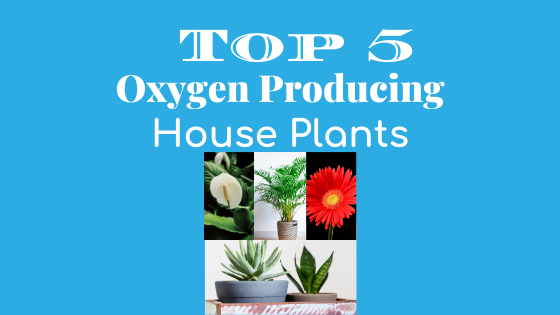



I never really thought to add extra oxygen in my home for health benefits. This a comprehensive list and you have helped decide to dive in and get a house plant!! Thank you.